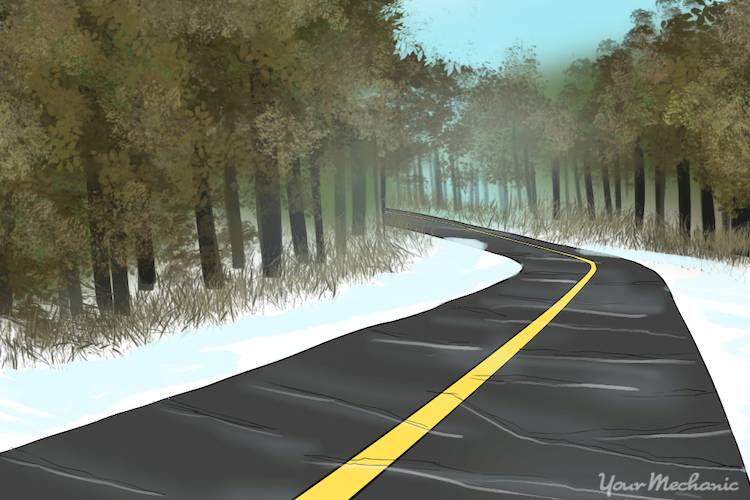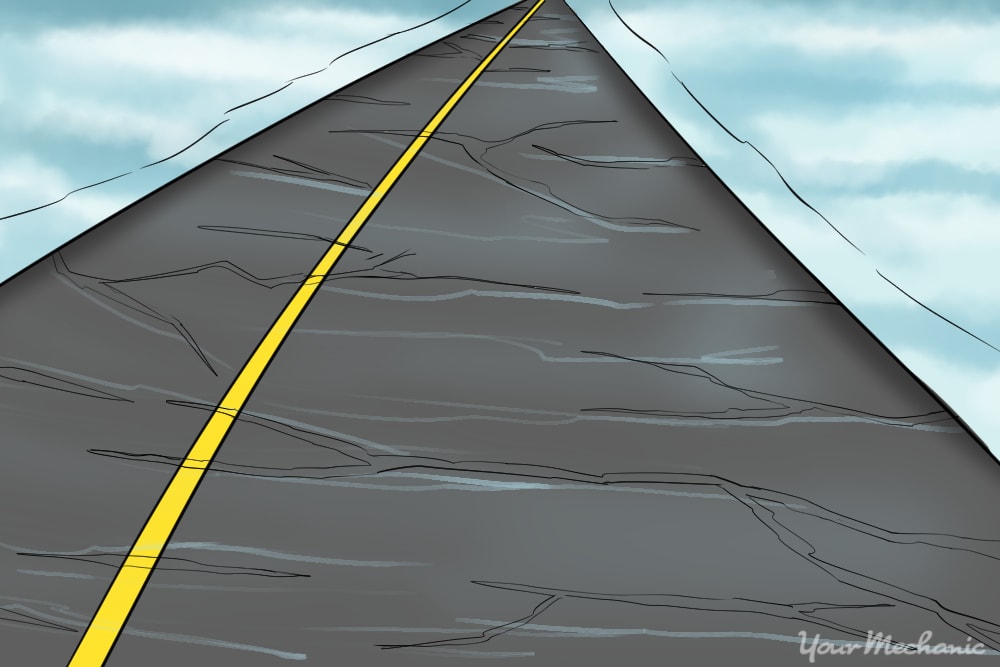

There’s nothing in driving that’s quite like hitting a patch of black ice. If you’ve experienced it, you know the unmistakable feeling and how scary it can be. Driving on normal ice is bad enough, but black ice is another issue entirely.
Black ice is not actually black, but clear and very thin, which makes it appear the same color as the road and hard to identify. Black ice occurs when a light snow or sleet settle on the road and freezes, or when snow or ice melts, and refreezes. This creates a perfect layer of ice with no bubbles in it that is wildly slick and nearly impossible to see.
When your car hits a patch of black ice it loses traction, and you can very easily lose control of your car. If you’ve ever seen a car in a single vehicle accident, facing the wrong way on the road, chances are they encountered a patch of black ice. While the safest thing you can do if there’s black ice is simply stay indoors, sometimes you have to drive places. When that’s the case, follow these tips to make sure that you drive as safely as possible around black ice.
Part 1 of 2: Avoid black ice when possible
Step 1: Know where the ice will be. Know where black ice is likely to be and when it’s likely to be there.
They say that the best offense is a good defense, and that’s certainly true of black ice. The safest way to avoid spinning out on black ice is to simply avoid it altogether. One of the best ways to do that is to know exactly where to expect it.
Black ice usually forms in very cold places, which is why there may be lots of ice on the road, but only a little black ice. Areas that are shaded by trees, hills, or overpasses and don’t have much sunlight are susceptible to black ice. Overpasses and bridges are hotspots for black ice, because the cold air circulates both above and below the road.
Black ice is also more likely to appear early in the morning or late at night, when the weather is at its coldest. Similarly, it’s less likely to be on heavily traveled roads, as the heat from vehicles can melt the ice.
Step 2: Stay away from known spots. Don’t drive on areas where you know black ice forms.
Black ice can be pretty predictable, as it will usually occur in the same places. If you live in an area susceptible to black ice, chances are you’ve heard people talk about a bad spot or maybe you’ve simply noticed a trend of where cars slide off the road in the winter.
If this is the case, do everything you can to avoid driving on that patch of road.
Step 3: Keep your eyes open. Scan the road for shiny patches of tarmac.
It’s very difficult to see black ice, but occasionally you’ll be able to spot hints of it. If you notice that a patch of the asphalt is shinier than the rest of the road, slow down or try and avoid it, as it’s possibly black ice.
Step 4: Watch the cars in front of you. Keep a close eye on the vehicles in front of you.
If a vehicle hits black ice, it will almost always lose control, even if just for a split second. If you are driving behind a vehicle, keep a close eye on it. If you notice the car glide or slide on the road at any point, be aware that there’s likely black ice there.
Part 2 of 2: Drive safely when you encounter black ice
Step 1: Avoid your instincts. Don’t brake or steer when you hit black ice.
As soon as you feel your car sliding, your first instinct will be to slam on the brakes and swerve the steering wheel. Avoid both of these things. When your car is on black ice, you have virtually no control over it.
Slamming on the brakes will just lock up the tires, which will make your car slide even more. Turning the steering wheel will make your car spin quickly and out of control, and you’ll likely end up backwards.
Instead, keep your hands firmly on the steering wheel. Your car will be out of your control for a split second, but it will usually slide right back onto a patch of normal tarmac.
Step 2: Take your foot off the gas. Remove your foot from the gas pedal.
Even though you shouldn’t use the brakes when you’re sliding on black ice, it is important to take your foot off the gas pedal, so you don’t exacerbate the slipping.
Step 3: Don’t let people tail you. Don’t let vehicles drive right behind you.
Having a vehicle behind you when there’s black ice is dangerous for two reasons. First, it increases the likelihood of a collision should you lose control of your vehicle. And second, it encourages you to drive faster than you’re comfortable doing, even if that’s subconscious.
If you notice a car close behind you, pull over or merge into a different lane until they’ve passed you.
Step 4: Practice damage control. Limit the damage if you’re going to crash.
Occasionally, you’ll hit a patch of black ice and lose control of the car severely enough that there’s no correcting it. When this happens, you’ll want to go into damage control mode. As soon as you realize that the car is either turning fully sideways or heading off the road, begin to tap your brakes until you start to get some traction.
If possible, steer the vehicle into the safest place possible, which is usually the side of the road, especially if there is gravel, dirt, or grass there.
- Tip: If you lose full control of your vehicle, do not get out of it. Instead, stay in your car and call 911 or a tow truck. If you hit a patch of black ice, there’s a good chance that the next driver to come along will hit it too, so you’ll be putting your life at risk if you get out of your vehicle.
Step 5: Assume the worst. Always assume the worst about black ice.
It’s easy to get overconfident with black ice. Perhaps you drove on the same road yesterday and had no problems. Or maybe you’ve hit a patch of black ice before, and you kept control of the car fine.
The reality is, if it’s cold enough, black ice can occur when you aren’t expecting it, and you can never know what the impact will be on your car. Don’t get overconfident and drive too quickly or lackadaisically.
Black ice is certainly scary, but it’s also something that you’re almost always able to safely handle. Be sure to drive at a low and slow pace, never push your comfort limits, and follow these guidelines, and you’ll be just fine when driving with black ice around. Always be sure to have routine maintenance performed on your car to keep it in top shape and ready for whatever conditions you might face.




